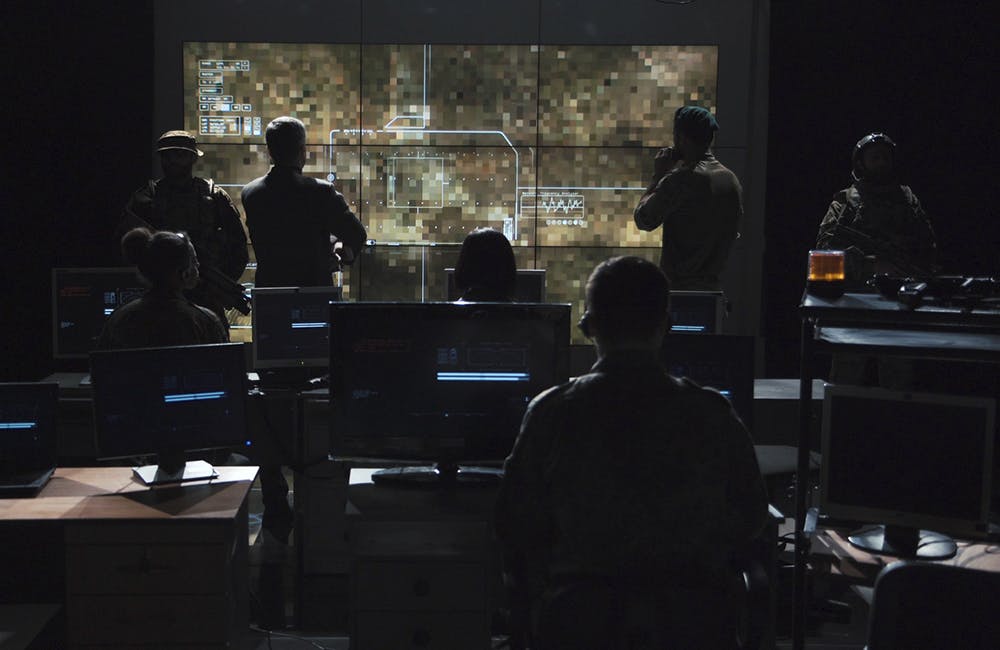Army Futures Command Strategizes AI, Software Advancements
The command’s new leader highlights priorities for the Army’s modernization efforts.

Army Futures Command is prioritizing artificial intelligence and advancing software capabilities as some of its top IT initiatives, the command’s new Deputy Commanding General for Acquisition and Systems Management Lt. Gen. Thomas Todd said Tuesday.
Todd joined AFC a month ago to fill a new role designed to oversee the delivery of modernized technologies to soldiers as the command continues to consolidate advanced technology acquisitions and innovation across its cross-functional teams.
Amid all of AFC’s activities, AI and automation tools to help accelerate decision-making across the Army are ongoing priorities.
“[We’re] extremely interested in AI autonomy, some of these types of technologies that help us in decision-making so that we can make decisions quicker than our adversaries — the network, in particular, connectivity, transport-layer processing, data storage,” Todd said.
AFC is aiming to use AI and autonomous technologies on the battlefield and while navigating the mobile nature of Army work. Todd hopes to integrate geospatial and terrestrial-based apparatuses into these autonomous innovations to meet the needs of Army activities.
“We have a fairly complex battlefield calculus and simply because we’re on the move. We’re never permanent; we’re not in a fixed place. We’re in austere environments, and so any kind of AI or autonomy or network workings can certainly help us,” Todd said.
AFC is also looking to advance software capabilities, especially with its establishment of its “Software Factory” this summer. In standing up this software center, Todd is looking to acquire the right personnel and infrastructure to support the advancements the factory is seeking to make in an agile fashion.
“We would hope industry can iterate in real time,” he said. “That software factory will be there so that we can have internal coders helping soldiers with real-time solutions.”
Todd stressed that he wants to be agile in both the development and maintenance of the Army’s software, adding that he envisions open architectures as a critical piece to achieving quick, iterative improvements.
“We cannot stay in the model that we’ve evolved into over the past 40 years,” Todd said. “If you think about it, we’ve spent a large part of the last 15 years trying to go from analog to digital. We did that. We’re there. In the software arena … it’s going to take open architectures, so common interfaces. Electric, mechanical and signal interfaces is the No. 1 way that we start with foundational ability to have any particular company come in if we’ve adopted an industry standard.”
Once AFC has built an open architecture, the command needs to move away from full regression testing, a rather time-consuming form of software testing that confirms that code changes do not negatively impact the respective program, Todd said. Rather, partitioned testing will bring quick, incremental updates and changes to software.
“We can now take some of those very complex issues, and if you partition them so that that particular piece of equipment is all that needs to be tested, the system is safe. We can turn it back on in a relatively rapid fashion,” Todd said. “It starts with open architecture, common standards — hopefully commercial standards for that interface control document that we’re going to hopefully hand out to everybody if there’s a need — and then obviously, being able to partition it so we avoid regressions.
This is a carousel with manually rotating slides. Use Next and Previous buttons to navigate or jump to a slide with the slide dots
-

Generative AI Demands Federal Workforce Readiness, Officials Say
NASA and DOI outline new generative AI use cases and stress that successful AI adoption depends on strong change management.
6m read -

The Next AI Wave Requires Stronger Cyber Defenses, Data Management
IT officials warn of new vulnerabilities posed by AI as agencies continue to leverage the tech to boost operational efficiency.
5m read -

Federal CIOs Push for ROI-Focused Modernization to Advance Mission Goals
CIOs focus on return on investment, data governance and application modernization to drive mission outcomes as agencies adopt new tech tools.
4m read -

Fed Efficiency Drive Includes Code-Sharing Law, Metahumans
By reusing existing code instead of rewriting it, agencies could dramatically cut costs under the soon-to-be-enacted SHARE IT Act.
5m read -

Agencies Push Data-Driven Acquisition Reforms to Boost Efficiency
New initiatives aim to increase visibility of agency spending, improve data quality and create avenues to deploy solutions across government.
5m read -

Data Transparency Essential to Government Reform, Rep. Sessions Says
Co-Chair of the Congressional DOGE Caucus Rep. Pete Sessions calls for data sharing and partnerships to reduce waste and improve efficiency.
5m read -

DOD Turns to Skills-Based Hiring to Build Next-Gen Cyber Workforce
Mark Gorak discusses DOD’s efforts to build a diverse cyber workforce, including skills-based hiring and partnerships with over 480 schools.
20m listen -

AI Foundations Driving Government Efficiency
Federal agencies are modernizing systems, managing risk and building trust to scale responsible AI and drive government efficiency.
40m watch -

Trump Executive Order Boosts HBCUs Role in Building Federal Tech Workforce
The executive order empowers HBCUs to develop tech talent pipelines and expand access to federal workforce opportunities.
3m read -

Navy Memo Maps Tech Priorities for the Future Fight
Acting CTO’s memo outlines critical investment areas, from AI and quantum to cyber and space, as part of an accelerated modernization push.
5m read -

DOD Can No Longer Assume Superiority in Digital Warfare, Officials Warn
The DOD must make concerted efforts to address cyber vulnerabilities to maintain the tactical edge, military leaders said at HammerCon 2025.
4m read -

New NSF Program Cultivates the Future of NextG Networks
The agency’s new VINES program looks to tackle key challenges like energy efficiency and future-proofing wireless tech.
21m watch
















